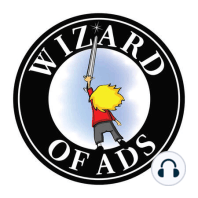5 min listen
Are You a Worthless Bastard?
ratings:
Length:
7 minutes
Released:
Mar 28, 2016
Format:
Podcast episode
Description
Let us supposethat this everyday worldwere at some one pointinvaded by the marvelous.1According to an article in the Harvard Business Review, such an event“requires a distinctive mode of organization—what sociologists call an art world. In art worlds, artists (musicians, filmmakers, writers, designers, cartoonists, and so on) gather in inspired collaborations: They work together, learn from one another, play off ideas, and push one another. The collective efforts of participants in these ‘scenes’ often generate major creative breakthroughs… the mass-culture industries (film, television, print media, fashion) thrived by pilfering and repurposing their innovations.” 2Today we’re going to look at three different art worlds and then I’m going to suggest that you create your own.Art World One: Although the works of the individuals that composed The Bloomsbury Group (1905 – 1937) profoundly influenced literature, economics and aesthetics in western society and altered modern attitudes towards feminism, pacifism, and sexuality, this highly diverse group had no real agenda other than enjoying one another’s company. The group had ten core members and twenty occasionals. A few of the more well-known core members were Virginia Woolf, a fiction writer, Lytton Strachey, a biographer, John Maynard Keynes, the economist, and Vanessa Bell, a post-impressionist painter.The Bloomsbury Group was an art world, not a mastermind group.A mastermind group is focused on finding business solutions.An art world exists only to enjoy one another’s company.Art World Two: “Oh God, no more Elves!” Hugo Dyson groans in agony, lolling on the couch. J.R.R. “Tollers” Tolkien is about read from his work-in-progress, The Lord of the Rings. “It’s bad enough listening to Lewis read about Narnia!” Hugo Dyson prefers the works of Shakespeare and in the early 1960s hosted some televised lectures and plays about him. Dyson’s relaxed, easy style won him accolades around the world. The Inklings were a group of ten interesting people who met at The Eagle and Child pub from 1932 to 1949. In the end, each of the ten left their mark on the world, high and bright.The Inklings didn’t get together because they were important.They became important because they got together.Art World Three: It all began when Lauren Bacall looked at a group of friends sitting around her living room and said, “You look like a goddam Rat Pack.” Did you know that Dean Martin, Sammy Davis, Jr., Peter Lawford and Joey Bishop weren’t in the original Rat Pack? The first Pack was a group who got together each week in the home of Lauren Bacall and her husband, Humphrey Bogart. The Rat Pack included Bogart and Bacall, Frank Sinatra, Judy Garland, Katharine Hepburn, David Niven, Spencer Tracy, Cary Grant, Rex Harrison, Sid Luft and Swifty Lazar. Visiting members included Errol Flynn, Nat King Cole, Mickey Rooney, Jerry Lewis and Cesar Romero. The group broke up when Bogart died in 1957. Shortly thereafter, Sinatra began his famous “Rat Pack 2.0”The Rat Pack was an art world.They got together only because they enjoyed being together.They did not expect an outcome or a result.You cannot participate in an art world if you have an agenda.You’ve got to be a Worthless Bastard.Q: Why are you calling obviously successful people Worthless Bastards?A: Because the conversations of an art world must never revolve around problem solving or the creation of value or...
Released:
Mar 28, 2016
Format:
Podcast episode
Titles in the series (100)
Thoughts to Think In the New Year by Wizard of Ads Monday Morning Memo
